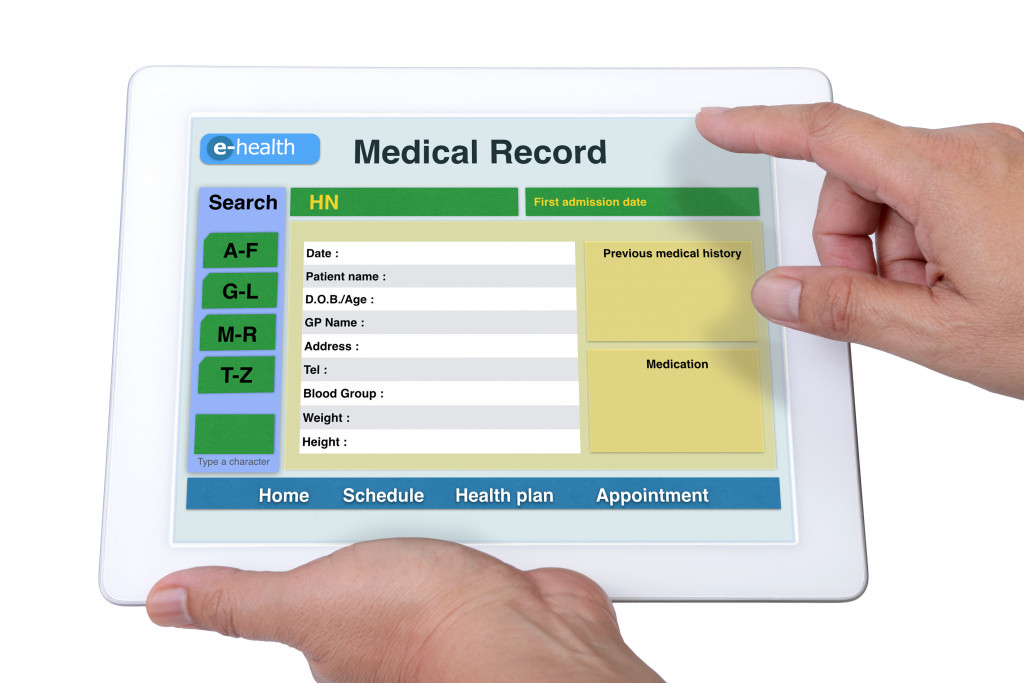- Electronic Health Records (EHR) systems enable digital storage and management of patient records for improved accuracy and accessibility.
- Telemedicine technologies allow virtual consultations and remote monitoring services to reduce the need for in-person visits.
- Artificial Intelligence (AI) and Machine Learning (ML) can assist with diagnosing diseases, predicting treatment outcomes, and analyzing medical images.
- Health Information Exchange (HIE) facilitates seamless and secure sharing of patient records across healthcare providers.
- Medical Billing services can help streamline revenue cycles and maximize profits.
Running a healthcare business requires staying current with the latest technologies to enhance efficiency, improve patient care, and streamline operations. Incorporating innovative technologies into your healthcare business can help you stay competitive and provide better patient services. This guide will explore five essential technologies you can utilize to enhance your healthcare business and ensure its success.
1. Electronic Health Records (EHR) Systems
Implementing an Electronic Health Records (EHR) system is crucial for modern healthcare businesses. EHR systems allow for the digital storage and management of patient information, including medical history, diagnoses, treatments, and test results. Utilizing an EHR system, you can improve the accuracy and accessibility of patient records, streamline workflows, and enhance coordination among healthcare providers. Additionally, EHR systems often come with built-in features such as e-prescribing, appointment scheduling, and billing integration, which can further improve efficiency and patient satisfaction.
2. Telemedicine and Remote Patient Monitoring

Telemedicine has revolutionized the delivery of healthcare services, especially in remote or underserved areas. You can offer your patients virtual consultations and remote monitoring services by utilizing telemedicine technologies. This technology enables patients to receive medical advice, follow-up appointments, and monitoring from the comfort of their homes, reducing the need for in-person visits and improving access to care. Remote patient monitoring devices, such as wearable sensors and mobile apps, can track vital signs, medication adherence, and other health metrics, allowing healthcare providers to monitor patients’ well-being in real time.
3. Artificial Intelligence (AI) and Machine Learning
Artificial Intelligence (AI) and Machine Learning (ML) technologies have immense potential in healthcare. AI can assist healthcare providers in diagnosing diseases, predicting treatment outcomes, and analyzing medical images with greater accuracy and efficiency. Machine Learning algorithms can identify patterns and insights from large volumes of patient data, helping in the early detection of diseases, personalized treatment planning, and population health management. Additionally, AI-powered chatbots can enhance patient engagement by providing instant responses to queries, appointment scheduling, and medication reminders.
4. Health Information Exchange (HIE)
Health Information Exchange (HIE) is a technology infrastructure that allows for the secure exchange of patient health information between different healthcare organizations and systems. Implementing HIE systems enables seamless and secure sharing of patient records, test results, and treatment plans across healthcare providers, improving care coordination and reducing duplication of tests or procedures. It enhances the continuity of care and enables healthcare providers to make well-informed decisions by accessing comprehensive and up-to-date patient information.
Here are some tips for using HIE in your healthcare business:
Understand Your Needs
Before you decide to implement an HIE system, understand your organization’s needs and how an HIE can help you meet those needs. Evaluate your current healthcare processes to identify gaps in care that could be addressed through an HIE system. Consider factors such as user access, data security, patient privacy, provider communication and workflow integration when deciding on the best approach for your business.
Choose the Right System
The first step in implementing an HIE is choosing the right system for your organization’s requirements. Look for a vendor with experience in providing systems tailored to your industry sector, and consider scalability if you anticipate significant growth or changes over time. Ensure you have the manpower and resources to manage and maintain the system.
Secure Data
A key benefit of using an HIE is that it enables secure data sharing across healthcare organizations. To ensure that patient information is protected, adhere to best practices for data security, such as encrypting all data transfers, implementing access control measures, monitoring user activity and performing regular audits. Ensure your staff has received appropriate training on how to use the system securely.
Monitor Performance
Once your HIE system has been implemented, monitor its performance closely to ensure everything works as expected. Pay attention to user feedback to identify any areas where improvements can be made or any potential issues with the system you should address quickly. Keep up with industry developments to ensure your system is up-to-date and compliant with relevant laws and regulations. Regularly review your policies to make sure they’re still fit for purpose.
5. Medical Billing Services

Medical billing services provide an essential link between healthcare providers and payers. Investing in professional and reliable medical billing services can help you ensure accurate, timely, and secure payment for the services you have provided. These services provide coding, claims processing, reimbursement management, data analytics, and collections expertise to streamline revenue cycles and maximize profits. With comprehensive medical billing services, you can ensure accurate coding and documentation, decrease financial errors and losses, save administrative costs, improve cash flow, and focus on providing quality patient care.
Final Thoughts
Incorporating these advanced technologies into your healthcare business can significantly enhance efficiency, improve patient care, and optimize financial operations. By utilizing Electronic Health Records (EHR) systems, implementing telemedicine and remote patient monitoring solutions, harnessing the power of Artificial Intelligence (AI) and Machine Learning (ML), adopting Health Information Exchange (HIE) infrastructure, and outsourcing medical billing services, you can stay at the forefront of the rapidly evolving healthcare landscape and provide the best possible care to your patients while ensuring the success and sustainability of your business.


